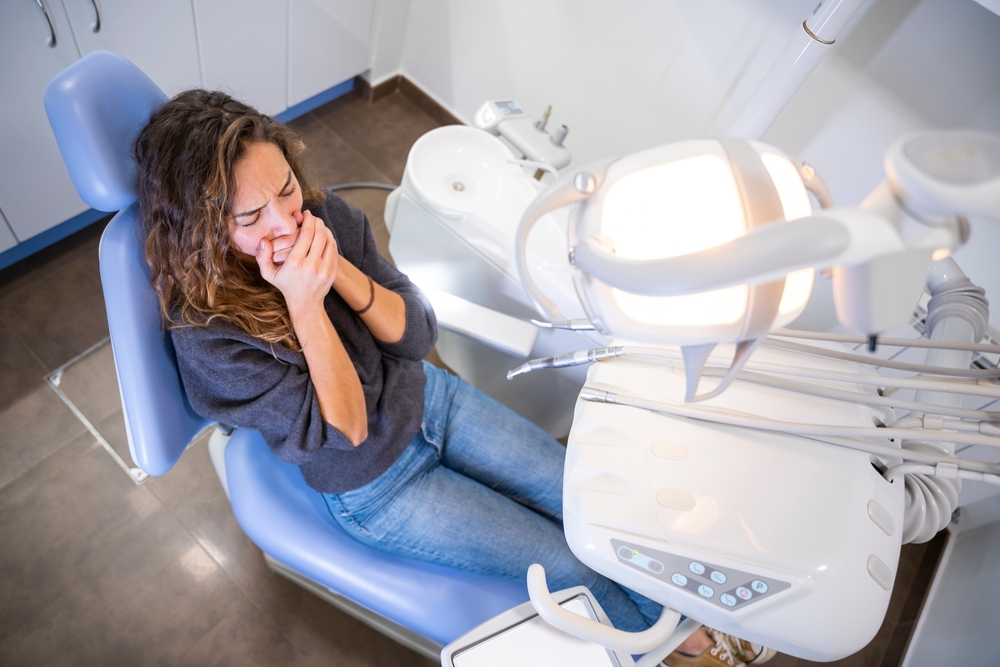Dental anxiety, or the fear of going to the dentist, is a common problem for many people. In fact, it’s estimated that up to 20% of the population avoids going to the dentist due to fear or anxiety. However, avoiding the dentist can lead to serious oral health problems, including tooth decay, gum disease, and even tooth loss. Fortunately, there are several ways to overcome dental anxiety and find comfort in the dental chair.If you’re looking for a trusted dental practice in the Pflugerville area, Pflugerville Dental Care offers a wide range of services to meet your oral health needs.
Contents
Understanding Dental Anxiety
Dental anxiety can stem from a variety of sources, including fear of pain, fear of needles, fear of the unknown, and even embarrassment about the state of one’s teeth. For some people, a past negative experience at the dentist can also contribute to dental anxiety.
Symptoms of dental anxiety can range from mild to severe and may include:
- Difficulty sleeping the night before a dental appointment
- Feeling physically ill or nauseous at the thought of going to the dentist
- Sweating or shaking during a dental appointment
- Panic attacks or a feeling of being trapped during a dental appointment
Overcoming Dental Anxiety
While dental anxiety can be a challenging issue to deal with, there are several strategies that can help to alleviate fear and anxiety.
-
Communication is key
One of the most important things you can do to overcome dental anxiety is to communicate with your dentist. Let them know about your fears and concerns, and work with them to develop a plan that makes you feel comfortable. This could include taking breaks during the appointment, using hand signals to communicate when you need a break, or using sedation dentistry.
-
Find a distraction
Many dental offices now offer distraction techniques, such as watching TV or listening to music during the appointment. These can help take your mind off of dental work and create a more relaxing environment.
-
Use relaxation techniques
Relaxation techniques, such as deep breathing or progressive muscle relaxation, can also be helpful in reducing anxiety. You can practice these techniques before and during the appointment to help stay calm.
-
Consider sedation dentistry
For those with severe dental anxiety, sedation dentistry may be a good option. This involves using medication to help you relax during the appointment. There are several different levels of sedation, from mild sedation (where you are awake but relaxed) to deep sedation (where you are nearly unconscious).
-
Take care of your oral health
While it may seem counterintuitive, taking care of your oral health can actually help to reduce dental anxiety. Regular dental checkups can help prevent dental problems from developing, which means you’re less likely to need extensive dental work in the future.
Finding Comfort in the Dental Chair
In addition to overcoming dental anxiety, there are several strategies you can use to find comfort in the dental chair.
-
Use visualization
Visualization is a powerful tool for reducing anxiety and can be particularly helpful in the dental chair. Before your appointment, spend some time visualizing a calm, peaceful environment, such as a beach or a forest. Focus on the sights, sounds, and smells of this environment, and imagine yourself feeling calm and relaxed.
-
Bring a support person
Having a support person with you during the appointment can also be helpful. This could be a family member or friend who can provide emotional support and help you feel more comfortable.
-
Use aromatherapy
Aromatherapy is another technique that can help to create a more calming environment. Essential oils, such as lavender or chamomile, can be used to help reduce anxiety and promote relaxation.
-
Use a weighted blanket
Using a weighted blanket during the appointment can also help to create a sense of comfort and security. The pressure from the blanket can have a calming effect and help to reduce anxiety.
-
Practice mindfulness
Mindfulness is the practice of being present and fully engaged in the current moment. It can be particularly helpful in reducing anxiety, as it helps to shift your focus away from negative thoughts and emotions. During your dental appointment, try to stay present and focused on the sensations in your body, such as the feeling of the dental chair or the sound of the drill. You can also try practicing mindfulness techniques, such as meditation or body scans, before and during the appointment.
-
Choose the right dentist
Finding the right dentist is also key in finding comfort in the dental chair. Look for a dentist who is experienced in working with patients with dental anxiety and who has a gentle, compassionate approach. You can also ask for recommendations from friends or family members who have had positive experiences with their dentist.
Conclusion
Dental anxiety can be a challenging issue to deal with, but it’s important to prioritize your oral health and seek treatment when necessary. By communicating with your dentist, using distraction and relaxation techniques, and finding strategies for comfort in the dental chair, you can overcome your fears and achieve a healthy, beautiful smile. Don’t let dental anxiety hold you back from receiving the care you need – take control of your oral health and find the support you need to feel comfortable and confident in the dental chair.

